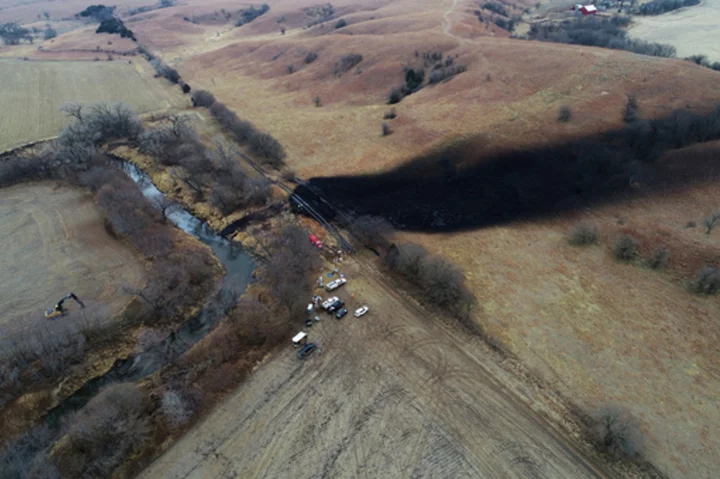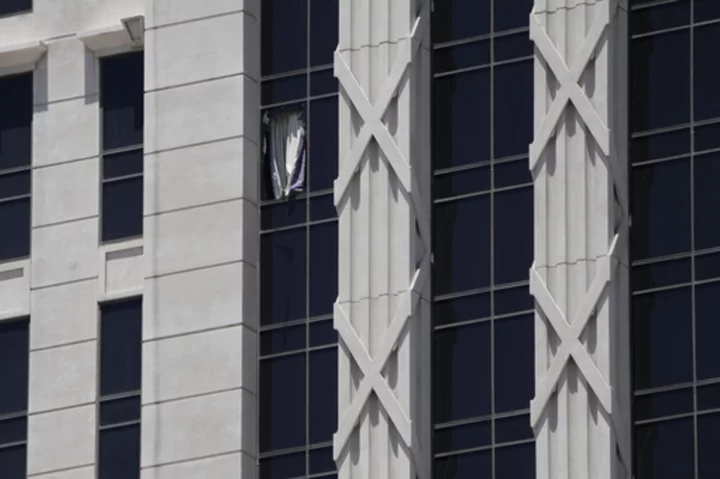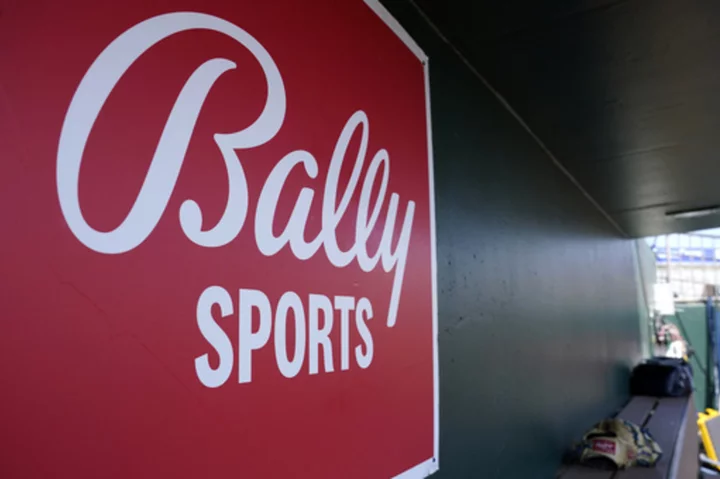TOPEKA, Kan. (AP) — Pipeline design issues, lapses by its operators and problems caused during its construction led to a massive oil spill on the Keystone pipeline system in northeastern Kansas, according to a report for U.S. government regulators.
An engineering consulting firm said in the report that the bend in the Keystone system where the December 2022 spill occurred had been “overstressed” since its installation in December 2010 — likely because construction activity itself altered the land around the pipe. The U.S. Department of Transportation's Pipelines and Hazardous Materials Safety Administration posted a redacted copy of the report online Monday, about three weeks after it was completed by RSI Pipeline Solutions, based in the Columbus, Ohio, area.
The report raised questions about Canada-based TC Energy's oversight of the manufacturing of its pipeline, saying the report's authors could find no record of a pre-installation inspection of the welds on the pipeline bend in Washington County, Kansas. The report concluded that TC Energy underestimated the risks associated with the bend going from its round shape when installed to a more-restricted oval shape within two years and didn't replace the bend after excavating it in 2013.
The company said in February that a faulty weld in the bend caused a crack that grew over time under stress. The spill dumped nearly 13,000 barrels of crude oil — each one enough to fill a standard household bathtub — into a creek running through a rural pasture about 150 miles (240 kilometers) northwest of Kansas City. It was the largest onshore spill in nearly nine years.
“When you have a pipeline that is spilling and having as many problems as Keystone One, it is clearly a red flag that there are bigger issues going on," said Jane Kleeb, who founded the Bold Nebraska environmental and landowner rights group that helped fight off TC Energy's plan to build a second pipeline, the Keystone XL.
The U.S. Department of Transportation has documented 22 leaks along the Keystone pipeline since it was built in 2010. The one in Washington County was by far the largest.
“At what point, does the federal government ... step in and say this has reached a point where we need to shut the full line down to do a full review of the pipeline?" Kleeb said.
The 2,700-mile (4,345-kilometer) Keystone system carries heavy crude oil extracted in western Canada to the Gulf Coast and to central Illinois. Concerns that spills could pollute waterways ultimately scuttled TC Energy's plans to build the Keystone XL across 1,200 miles (1,900 kilometers) of Montana, South Dakota and Nebraska.
In Kansas, no one was evacuated because of the December spill. State and U.S. government officials have said it didn't affect two rivers and a lake downstream from the creek.
In response to a request Tuesday for comment, TC Energy pointed to a statement it issued when the report was finished in April but not public. In it, Richard Prior, president of TC Energy's Liquids Pipeline operations, said the company was confident in the pipeline's reliability.
TC Energy has said the cleanup will cost the company $480 million, and it announced last week that it had finished recovering oil from the creek.
Prior said last month: “We are unwavering in our commitment to fully remediate the site.”
But Bill Caram, executive director of the Pipeline Safety Trust watchdog group, said that with the history of problems along the Keystone pipeline, the public has plenty of reasons to doubt its safety.
“I would certainly like to see PHMSA come up with a plan to work with TC Energy to develop a plan so that the public can be ensured that TC Energy will be able to operate this pipeline safely going forward. I don’t think the public has that kind of trust in this pipeline right now,” Caram said.
Richard Kuprewicz, who has five decades of experience in the pipeline industry and consults with governments about them, said problems like this flawed weld need to be found during construction but TC Energy clearly missed it amid the pressure to get the multibillion-dollar project built quickly.
“It looks like the quality control got out of hand at least in this segment. I can’t say for the whole line,” said Kuprewicz, who is president of Washington-based Accufacts Inc.
The consultants' report said the pipeline rupture and oil spill occurred only days after TC Energy began testing for increasing the pressure in the Keystone system, though the Kansas section was operating about 16% below the top pressure allowed by U.S. government regulators. At the same time, the company was running a device through the pipeline to look for potential leaks.
Pipeline valves were left open so that the leak-testing tool could pass through the pipeline, the report said, and that could have contributed to the size of the spill.
The report said a March 2021 engineering assessment of Keystone's pipeline from southern Nebraska to northern Oklahoma showed five bends, including Washington County's, had the same oval “deformation.”
The report noted that the industry generally does not see so-called “ovalities” as a threat, so the “obvious” focus in Washington County in 2012 and 2013 when that abnormality was found there was ensuring that a leak-detecting tool still could pass through the bend.
“Yet this focus may have caused the Pipe Integrity team and senior management to overlook a potential concern of added stress on the elbow and its possible impact on future integrity,” the report said.
The report added that 108 other pipe fittings manufactured for the Keystone system in 2010 could have “imperfections” similar to those in the Washington County bend. All of them were replacements for other fittings found to be deficient.
Because other bends made on the same day had weld flaws that were repaired, the report found it “plausible” that the Washington County bend also had flaws "repaired but not recorded.”
The lack of an inspection report means that, at a minimum, record-keeping procedures were not followed and, at worst, the report said, “The weld inspections were never performed.”
___
Funk reported from Omaha, Nebraska.
___
Follow John Hanna on Twitter: https://twitter.com/apjdhanna









